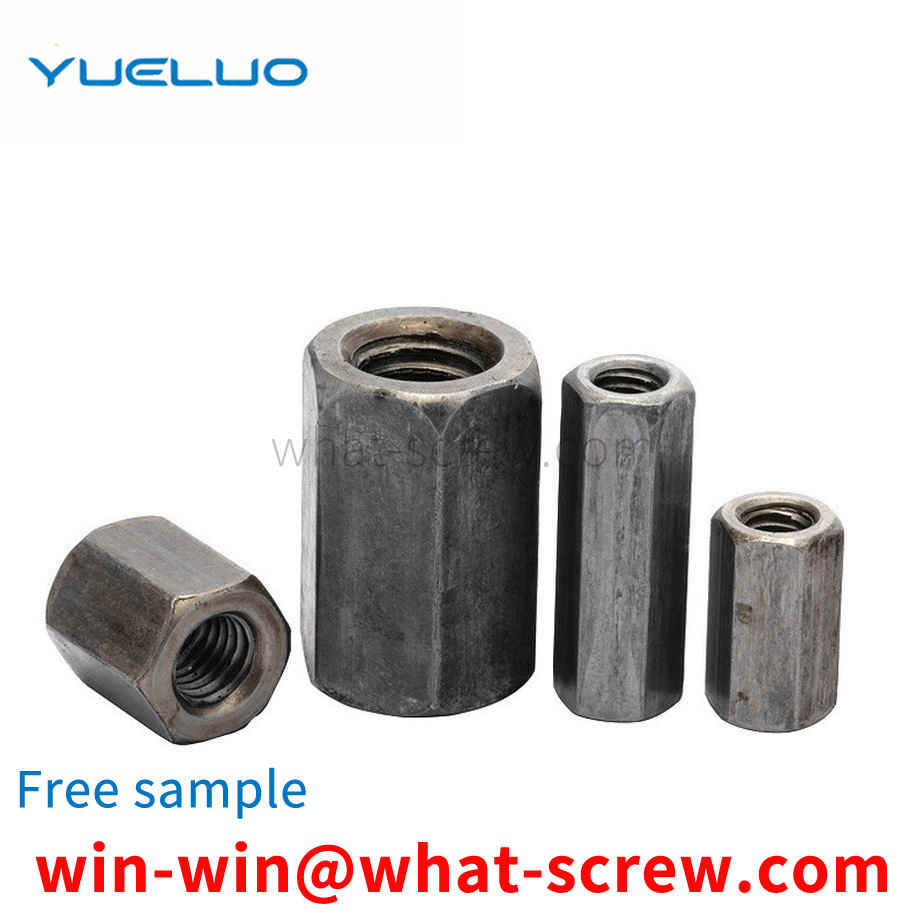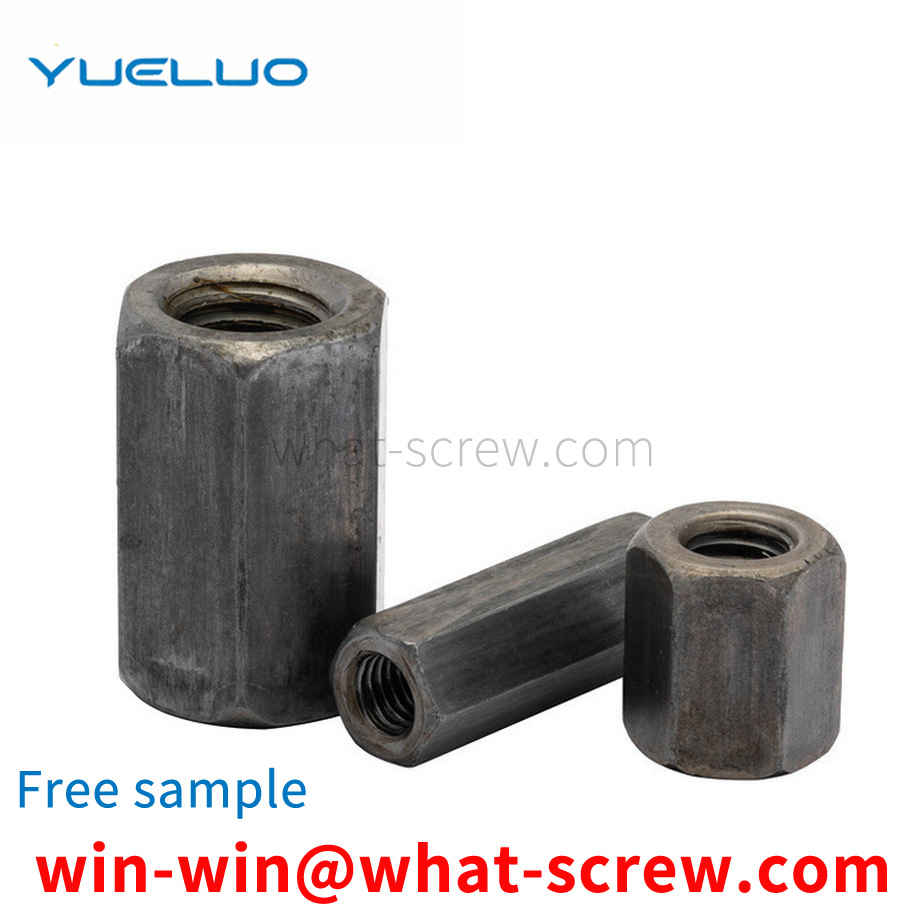However, although the existing screw can meet the function of connecting and tightening objects, its structure includes a head and a threaded rod connected with the head. Since it only has one threaded rod, it does not have a two-way connection function and cannot be satisfied with the Some special use requirements bring inconvenience to use.
The produced screws, due to unreasonable production aspects, are likely to cause quality problems in the screws. During production, many screw quality problems may be found upon delivery. Let's talk about the quality problems often encountered by screws and the reasons for the quality problems, and finally put forward some solutions. 1. The head of the screw is deformed and the head is crooked. The possible reasons are the poor installation of the first punch of the screw die and the improper adjustment of the machine. 2. The head of the screw is not round. The reason is that the selection of the first punch of the screw mold is improper or the first punch is not full enough. 3. The screw has burrs or burrs. The reason is the poor forming of one punch, mainly caused by too large gap between punch and die hole or too short punch. 4. The screw head is cracked and the screw head is cracked. The reason may be that there is a problem with the quality of the screw wire itself, so before the screw wire is headed, the quality department must check it and use the potion. Especially the stainless steel screw wire, it is necessary to check that it is stainless steel 201 and that is stainless steel 304. It is also possible that a die is used incorrectly (such as a die with a hexagonal washer head for a pan head), and the viscosity of the lubricating oil fails. For the problem of the screw head, you can read the article written by Manager Zhu above - high-strength screw fracture or head crack detection. In this article, some problems encountered by the screw head and how to detect the screw head problem are clearly introduced [4]. The common quality reasons for screws are of course more than the above, this is only part of it. There are other quality issues, then Manager Zhu will talk about it. The above screw quality reasons are for reference. If you encounter these problems, you can try the solutions proposed.
Nuts are a commonly used fastening parts and are widely used in various mechanical and electrical equipment. Common application equipment does not have particularly strict requirements on the anti-loosening properties of nuts, but for automobiles, high-speed railways, aerospace and nuclear power and other fields, many equipment or components work in a vibration environment for a long time, and it is easy to loose between bolts and nuts. This will affect the normal operation of the equipment and even cause safety accidents.
screw generally includes a screw head, a screw part and a screw tail. In the traditional screw processing, the screw head and the screw part are punched out first, and then the threaded part is processed on the screw shank through the turning process. When the screw head is traditionally punched, the screw head is easily damaged due to the large punching force.
Code name and standard number of inch thread commonly used abroad Mark code name country and standard number Remarks BSW standard Wyeth coarse thread series, general purpose cylindrical thread British standard BS 84 inch thread with a profile angle of 55° BSF standard Wyeth fine thread series, General Purpose Cylindrical Thread Whit.S Additional Whit.S Optional Series, General Purpose Cylindrical Thread Whit Non-standard thread with Whitworth profile UN Uniform thread of constant pitch series American standard ANSI B1.1 inch thread with 60° profile angle, with Internal and external threads with standard profile (flat or rounded at random) UNC Coarse thread unified thread UNF fine thread unified thread UNEF superfine thread unified thread UNS① Special series unified thread UNR round The uniform thread profile angle of the arc root constant pitch series is 60° inch thread, UNR, UNRC, UNRF, UNREF, UNRS with arc root are only used for external thread without internal thread UNRC arc root coarse thread Series Unified Thread UNRF Circular Root Fine Thread Series Unified Thread UNREF Circular Root Ultra Fine Thread Series Unified Thread UNRS Circular Root Special Series Unified Thread NPT② Generally used for pipe thread American standard ANSI B1.20.1 Profile angle is 60° Inch Pipe Thread NPSC Pipe Fitting Straight Pipe NPTR Pilot Connection Tapered Pipe NPSM Mechanical Connection Straight Pipe NPSL Lock Nut Straight Pipe NPSH Hose Connection Straight Pipe NPTF Dry Seal Standard Tapered Pipe Thread American Standard ANSI B1.20.3 Type I PTF-SAE SHORT Dry Seal Short Taper Pipe Thread Type II NPSF Dry Seal Standard Fuel Oil Straight Pipe Internal Thread III Type NPS1 Dry Seal Standard General Straight Pipe Internal Thread IV Type ACME③ General Purpose Trapezoid Thread American standard ANSI B1.5 Inch drive thread with 29° profile angle ① Dimensions and tolerances All diameter and pitch combinations other than the standard series are calculated using the same formula as the standard series. ② my country's 60° conical pipe thread GB/T12716-1991 is equivalent to it. ③ACME thread includes two kinds of matching trapezoidal threads, general purpose and centering, of which the general purpose thread has the same performance as the trapezoidal thread specified in my country's standard GB/T5796-1986.
We have many years of experience in the production and sales of screws, nuts, flat washers, etc. The main products are: countersunk head pull nut, inlaid galvanized nuts, round cross recessed screws, stud bolts and other products, we can provide you with suitable products for you. Fastener Solutions.



















 Service Hotline
Service Hotline




